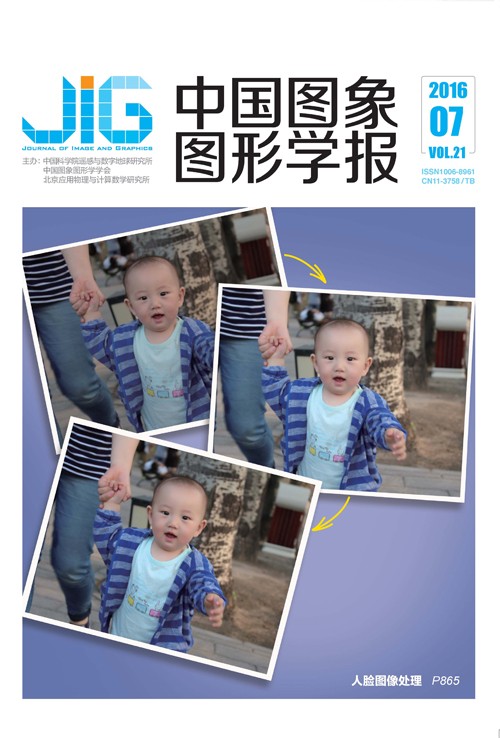
星载SAR影像上船舶方位向模糊去除算法
邴磊1,2,3, 邢前国1, 邹娜娜4, 李圳波3, 吴樊5(1.中国科学院烟台海岸带研究所, 烟台 264003;2.中国科学院大学, 北京 100093;3.烟台海事局, 烟台 264000;4.烟台五中, 烟台 264002;5.中国科学院遥感与数字地球研究所, 北京 100094) 摘 要
目的 掌握海上船舶分布状态对于海上交通流分析和通航安全管理具有重要作用。遥感技术,特别是星载合成孔径雷达(SAR)技术的发展,为大范围海上船舶检测提供了有效的手段,但受SAR成像机制影响,海上船舶目标在星载SAR影像上通常存在着不同程度的方位向模糊噪声,这些噪声易被误判为船舶,导致船舶识别中虚警率提高。方法 本文简述了方位向模糊噪声的产生原因,提出了一种新的星载SAR影像上船舶方位向模糊去除算法,该算法的核心是构建目标方位向角度一致性、方位向位置偏移距离和方位向模糊能量衰减3个判别规则,对潜在SAR影像亮斑目标进行逐层筛选,实现船舶真实目标和方位向模糊目标的判别。结果 选取中国渤海海域和黄海海域的30 m分辨率的Radarsat-2数据进行案例分析,并与船舶自动识别系统(AIS)实测数据进行比对校验,结果表明,传统的双参数恒虚警率(CFAR)算法和基于K分布的CFAR等算法对于船舶难以剔除方位向模糊,容易造成虚警,而本文算法对实验影像的船舶方位向模糊去除准确率优于95.8%,能够有效剔除船舶方位向模糊。结论 该算法为星载SAR影像上船舶方位向模糊去除提供了新的手段,有助于提高SAR影像上船舶目标检测的准确性。
关键词
Azimuth ambiguity removal method for ship detection based on spaceborne SAR images
Bing Lei1,2,3, Xing Qianguo1, Zou Nana4, Li Zhenbo3, Wu Fan5(1.Yantai Institute of Coastal Zone Research, Chinese Academy of Sciences, Yantai 264003, China;2.University of Chinese Academy of Sciences, Beijing 100049, China;3.Yantai Maritime Safety Administration, Yantai 264000, China;4.Yantai No.5 Middle School, Yantai 264001, China;5.Institute of Remote Sensing and Digital Earth, Chinese Academy of Sciences, Beijing 100094, China) Abstract
Objective The distribution of ships at sea is a key factor for maritime traffic analysis and ship safety management. With the rapid development of earth observation technology, remote sensing is now considered a useful tool to detect ships at sea on a large scale. Particularly owing to the unique technical properties, such as being less vulnerable to cloud and mist and being unaffected by day and night, synthetic aperture radar (SAR) is widely used for ship detection in maritime security management. However, azimuth ambiguities caused by the mechanism of SAR imaging can be easily misclassified as ships on SAR images, leading to a high false alarm rate in ship detection, which has been a difficult problem in ship monitoring with SAR. Method Considering this issue, the mechanism of azimuth ambiguities on SAR images was initially analyzed in this study. Then, a new method for azimuth ambiguity removal was proposed based on this mechanism. The removal process of azimuth ambiguities includes three steps. First, the consistency of angles is estimated between the real target and its azimuth ambiguities. In this step, the determination method of azimuth angle between real target and its azimuth ambiguities was also discussed. Second, the uniformity of offset distance is determined, and determining the method of the azimuth distance between the real target and its azimuth ambiguities was also discussed. Third, energy decay is analyzed in the azimuth direction, considering that azimuth ambiguities of real ships on SAR images will follow the principles of energy decay. Using these three discriminant criteria, bright targets detected from SAR images can be classified as real ships and azimuth ambiguities. Result Radarsat-2 images covering the Bohai Sea or the North of the Yellow Sea were selected for a case study; the spatial resolution of these test images captured from March to June 2015 was 30 m. Using the method proposed in this research, azimuth ambiguities of ships were removed step by step and stored in a geodatabase. Real ship targets were further extracted and stored in a geodatabase. These results were compared with the Automatic Identification System data, which can be considered factual data for the case study. Experimental results indicate that all azimuth ambiguities in the study area were detected and removed from real ship targets. Conclusion After being tested with four Radarsat-2 images, the average accuracy of this azimuth ambiguity removal method based on spaceborne SAR images proposed in this research is more than 95.8%. The results showed that this method can be effectively used to distinguish real ships from its azimuth ambiguities for 30 m spatial resolution SAR images and can improve the accuracy of ship detection on SAR images.
Keywords
ship detection azimuth ambiguities synthetic aperture radar (SAR) automatic identification system(AIS) remote sensing Radarsat-2
|



 中国图象图形学报 │ 京ICP备05080539号-4 │ 本系统由
中国图象图形学报 │ 京ICP备05080539号-4 │ 本系统由